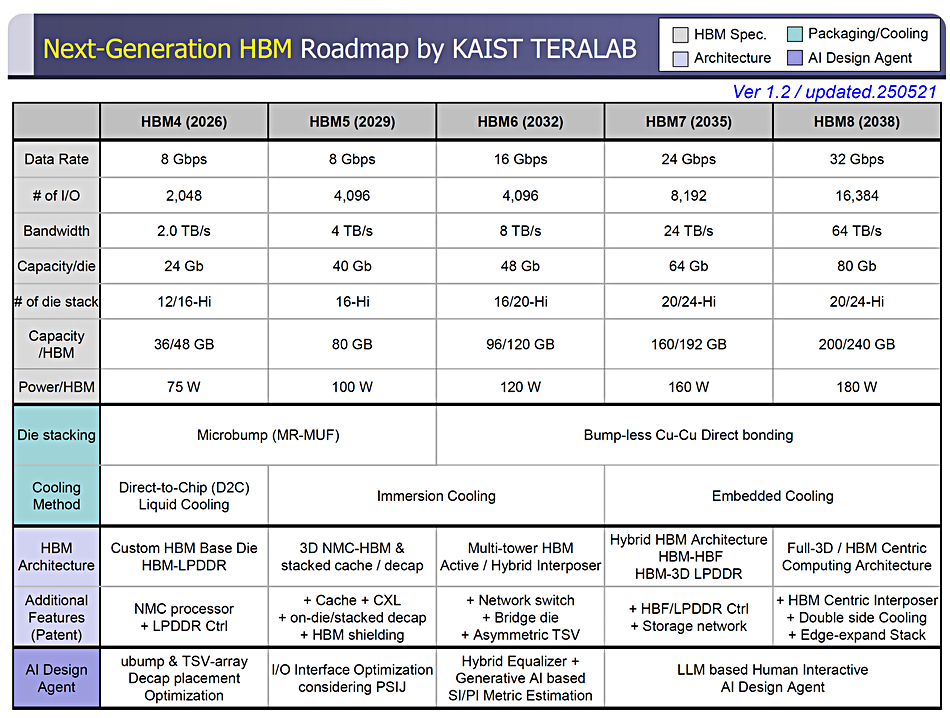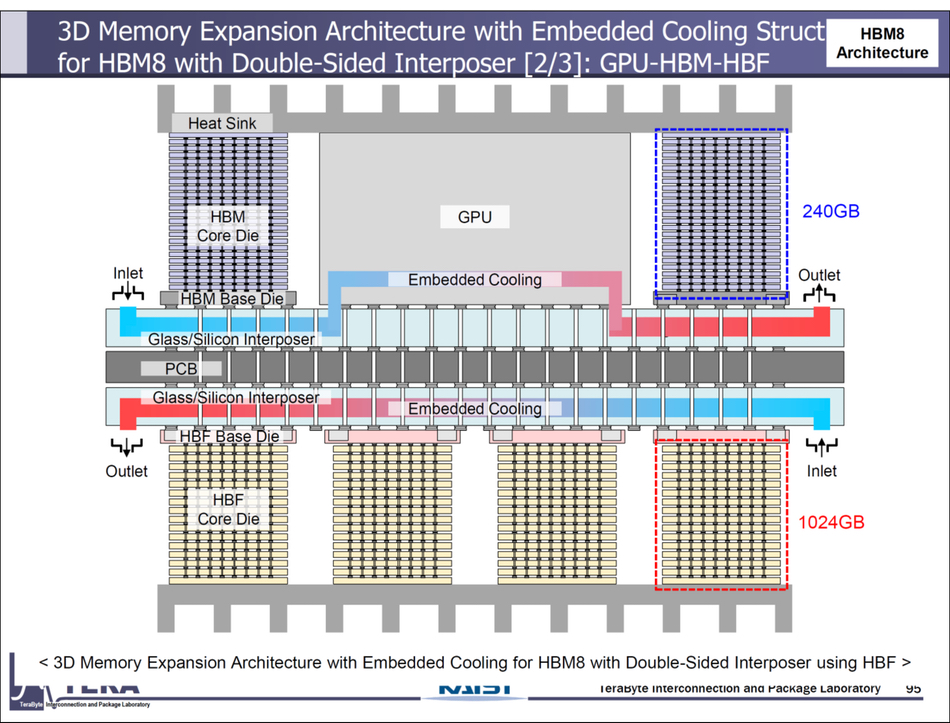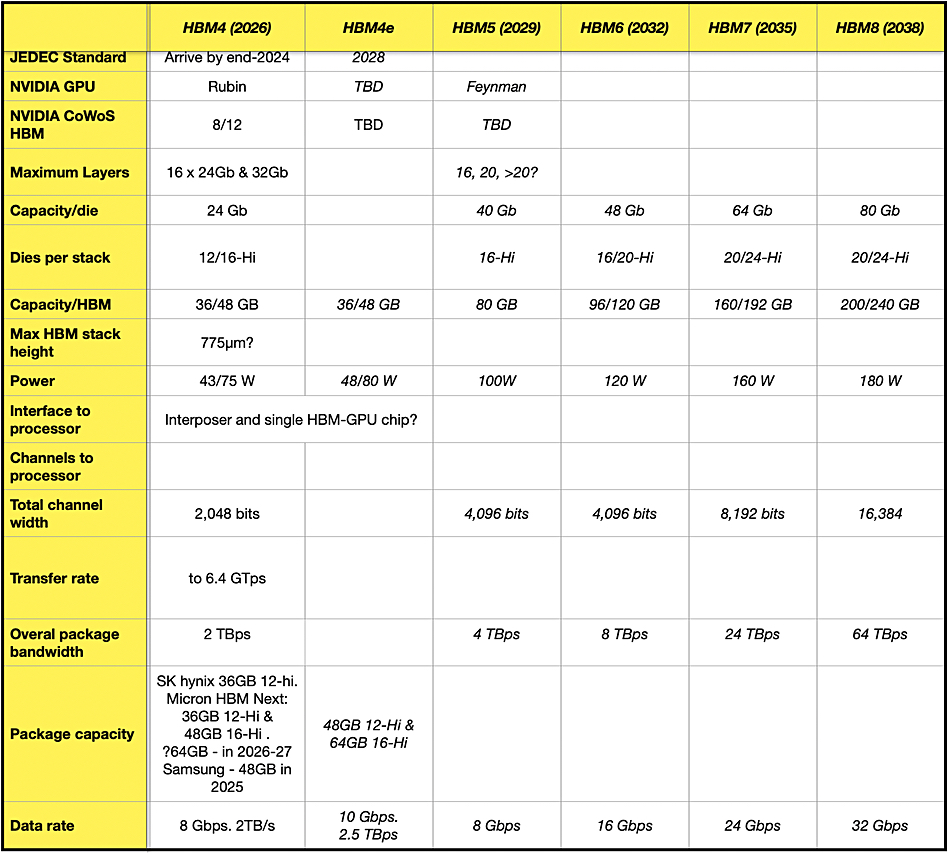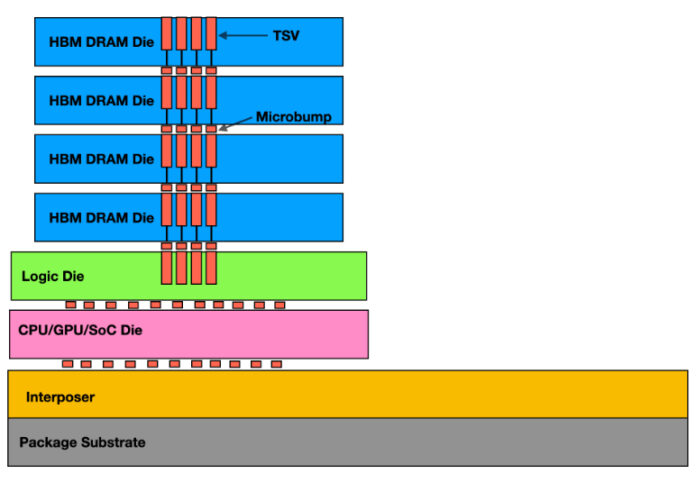Four more high-bandwidth memory (HBM) generations have been outlined by KAIST (Korea Advanced Institute of Science & Technology) and its Terabyte Interconnection and Package Laboratory (Tera) research group, with up to 64 TBps bandwidth and 24-Hi Stacks – 50 percent more than HBM4.
The latest HBM generation is HBM4 with up to 2 TBps bandwidth (data rate) and a max of 16-Hi DRAM chip stacks and 64 GB capacity. HBM standards are published by JEDEC (Joint Electron Device Engineering Council) with the first HBM standard (JESD235) published in 2013, and updates like HBM2 (JESD235A), HBM2E, HBM3, and HBM3E improving bandwidth, capacity, and efficiency.

HBM3 and HBM4 use either forced air cooling (fin/fan) or forced water cooling (D2C – direct to chip) cooling. HBM5 in 2029 will use immersion cooling with HBM7 and HBM8 going for embedded cooling, in which cooling mechanisms are integrated directly into or very close to the chip itself.
Microbump (MR-MUF) die stacking will be used with HBM4 and 5 with bumpless Cu-Cu (copper-to-copper) direct bonding featuring in HBM6 to HBM8 because of its high density and performance and better signal integrity.
Nvidia’s Feynman (F400) accelerator is set to use HBM5, with an entire GPU HBM5 capacity of 400 to 500 GB. It has a 2028/2029 release date.
HBM6 in 2032 will have an active/hybrid (silicon + glass) interposer and its maximum stack number rises to 20 from HBM5’s 16. This will send per-stack capacity to 96 to 120 GB.
HBM7 in 2035 will feature 160 to 192 GB stack capacity with an up to 24-Hi stack and 24 TBps bandwidth, three times that of HBM6. The bandwidth increases to 64 TBps with HBM8 in 2038, which has the same max 24-Hi stack height. Stack capacity rises to 200-240 GB.
HBM8 could use a double-sided interposer with HBM on one side and HBM, LPDDR memory, or HBF (high-bandwidth flash) memory, which combines the high-bandwidth characteristics of HBM with the high capacity of 3D NAND, on the other. The HBM dies have a 240 GB capacity; the LPDDR ones 480 GB; and the HBF dies, 1,024 GB capacity.

We’ve summarized what we know in a table listing HBM4-8 characteristics:

This is a roadmap and the further out it gets the less certainty can be attached to it. We have to wait for JEDEC to issue a formal specification for future HBM generations before trusting the details.








